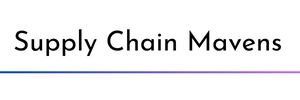“Freedom’s just another word for nothing left to lose.” - Janice Joplin
In real estate the catchphrase is, “Location, Location, Location.” In the post-Covid supply chain world the new supply chain catchphrase is, “Agility, Agility, Agility.” I bet those of us in supply chain now read, say, or hear the word “agility” at least 100 times a day. Every article or presentation (including mine) have lately been filled to the brim with agility, agile, or any of at least a dozen of its synonyms.
The fact is that this is not a new phenomenon; agility has always been a requirement for successful organizations and their supply chains. One of the most telling agility facts is that of the companies on the Fortune 500 in 1955 only 60 still existed in 2017, before the pandemic. That’s an astonishing 12 percent! Of the 500 largest business organizations in the mid-twentieth century, only 12 percent of them were around 62 years later. That’s less than the lifetime of an average American. The dinosaurs were destroyed by an asteroid. I believe that agility, or to be more precise, the lack of agility, is the asteroid of business.
Those of you who are regular readers of this column or my articles in Supply Chain Management Review are familiar with my statement that companies and supply chains need to adapt to survive and thrive in the post-Covid world, and the ability to adapt requires two things, resiliency, and agility. Resiliency is the ability to absorb a shock or disruption. Agility, on the other hand, is the ability to quickly turn in a new direction and develop new products, processes, markets, or businesses.
Resiliency is most commonly attributed to organizations. It permeates the organizational culture from the top down. Resilient companies have strong financial positions. They are highly liquid, with current ratios (current assets / current liabilities) is excess of 1.0. Resilient organizations have product portfolio pipelines that skew toward new and mature products and don’t have many products in the post-mature phase. They either stop producing such items or sell off to other companies. They are known for having stable management teams who are reasonably risk averse and strategically savvy.
Agility, on the other hand, is a trait more commonly found in individuals. These people are creative, innovative, and open to new ideas. Agile people are curious about the world. They are the people that are constantly asking two questions. The first is “Why?” as in “Why do we do this?”. The second one is “Why not?” as in “Why not try this?”. When such questions are asked, disruption occurs, upsetting the status quo and creating opportunities for change. And change, when done right, is nearly always for the better.
An organization becomes agile when people with agile mindsets are placed in key leadership positions. These people are then free to create agile cultures within their span of control. These include agile supply chains.
Companies have always needed to adapt to grow. And to adapt an organization needs to be both resilient and agile. But a company that is resilient can still die over time. Think of Sears, Kmart, and JCPenney. All are on life support and have been for many years. Penney’s, recently acquired by Simon Property Group and Brookfield Asset Management, recently made a bid to buy Kohl’s. Some see it as bold, but this may be more of a stay of execution and an attempt to delay the inevitable than a move to improve organizational agility. Time will tell.
In the post-Covid world both resilience and agility are required. A company needs to be resilient to respond to the disturbances and disruptions that will occur in the next decade. It must also be staffed with leaders who are agile and can create the agile culture needed to survive and thrive in the long run. Each is necessary, but neither alone is sufficient. Both are required to dodge the asteroid.
Gary welcomes your comments and feedback. You can email him at gary@supplychainmavens.net.

